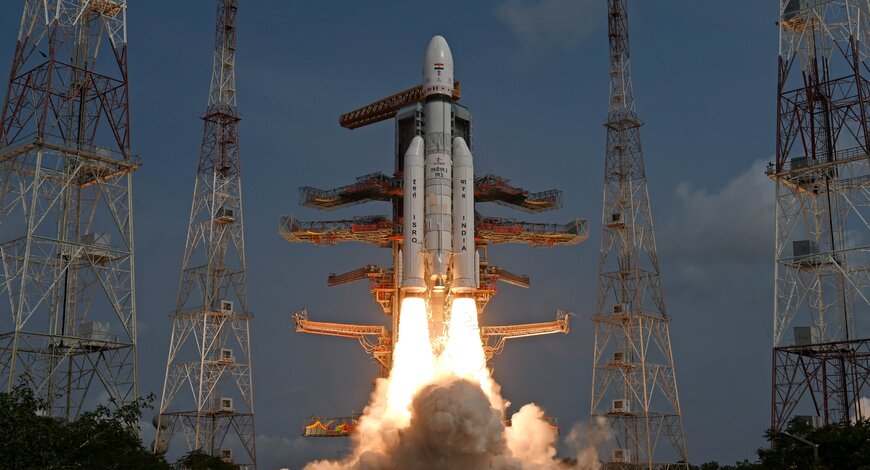- Economy
- Education And Career
- Companies & Markets
- Gadgets & Technology
- After Hours
- Healthcare
- Banking & Finance
- Entrepreneurship
- Energy & Infra
- Case Study
- Video
- More
- Sustainability
- Web Exclusive
- Opinion
- Luxury
- Legal
- Property Review
- Cloud
- Blockchain
- Workplace
- Collaboration
- Developer
- Digital India
- Infrastructure
- Work Life Balance
- Test category by sumit
- Sports
- National
- World
- Entertainment
- Lifestyle
- Science
- Health
- Tech
ISRO Commercial Wing Readies For Second Space Mission
The primary satellite for this mission is the DS-SAR satellite of the Singapore government. This satellite will be employed by Singapore government agencies for satellite imaging purposes
Photo Credit : ISRO

New Space India (NSIL), the commercial arm responsible for space missions under the Indian Space Research Organisation (ISRO), has announced its second consecutive commercial space mission. The launch is scheduled for 31 July and will utilise ISRO's Polar Satellite Launch Vehicle (PSLV). The mission, known as PSLV-C56, has a payload comprising one main satellite and six additional satellites.
The primary satellite for this mission is the DS-SAR satellite from the Defence Science and Technology Agency (DSTA) of the Singapore government. This satellite will be employed by Singapore government agencies for satellite imaging purposes.
This upcoming mission follows closely after the previous PSLV mission, named PSLV-C55, which carried two satellites from Singapore into orbit. The primary payload of that mission was Singapore's 'TeLEOS-2,' with the secondary payload being Lumelite-4.
The six secondary payloads on board the PSLV-C56 mission include two technology demonstrator satellites, Velox-Am and Scoob-II, an experimental satellite called Atmospheric Coupling and Dynamics Explorer (Arcade), the private nanosatellite NuLIon, and two others, Galassia-2 and Orb-12 Strider.
Notably, the PSLV-C56 mission is separate from the Chandrayaan-3 mission, which was launched by ISRO on 14 July. Chandrayaan-3 aims to land a rover and landing module on the lunar south pole, making India the first country to achieve this feat. In the commercial space sector, India is striving to gain a larger share of the satellite launch market, which has been predominantly dominated by the US and, prior to the Ukraine war, Russia.
According to a report by the Indian Space Association (ISpA) and EY India, India's space economy is projected to reach USD 13 billion by 2025, with satellite launch services and applications accounting for 36 per cent of this total.
In addition to its commercial space missions, NSIL is also working on developing the Small Satellite Launch Vehicle (SSLV) light rocket launcher. This launcher is designed to deploy small satellites in low-earth orbit (LEO) and boasts quick turnaround times between missions, on-demand services, and the ability to operate independently without having to wait for other satellites to share the launch. The SSLV has already completed one successful demonstrator mission and is expected to conduct regular commercial missions in the next three years.
Besides NSIL, private space startups are also expected to play a significant role in contributing to India's space aspirations.
